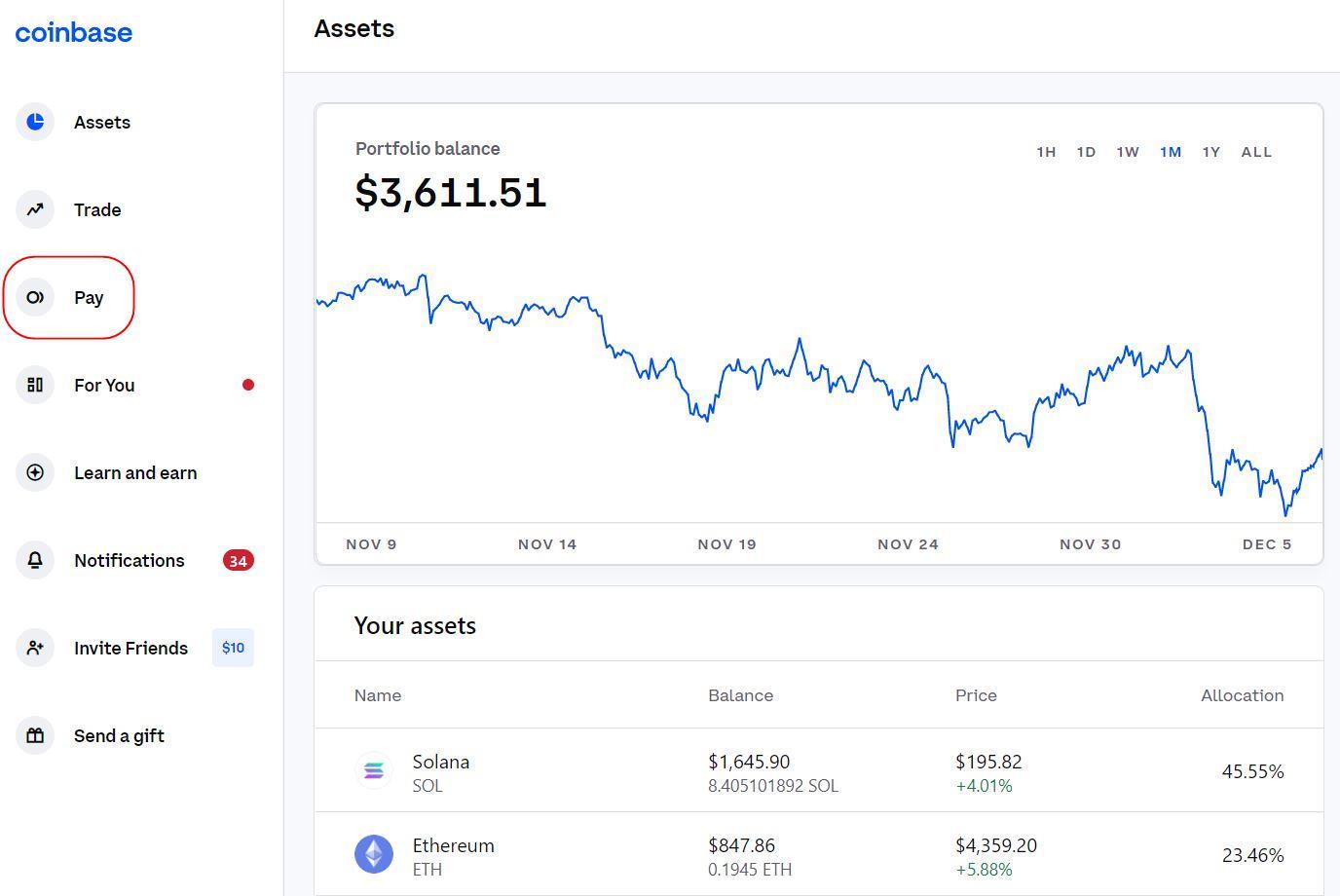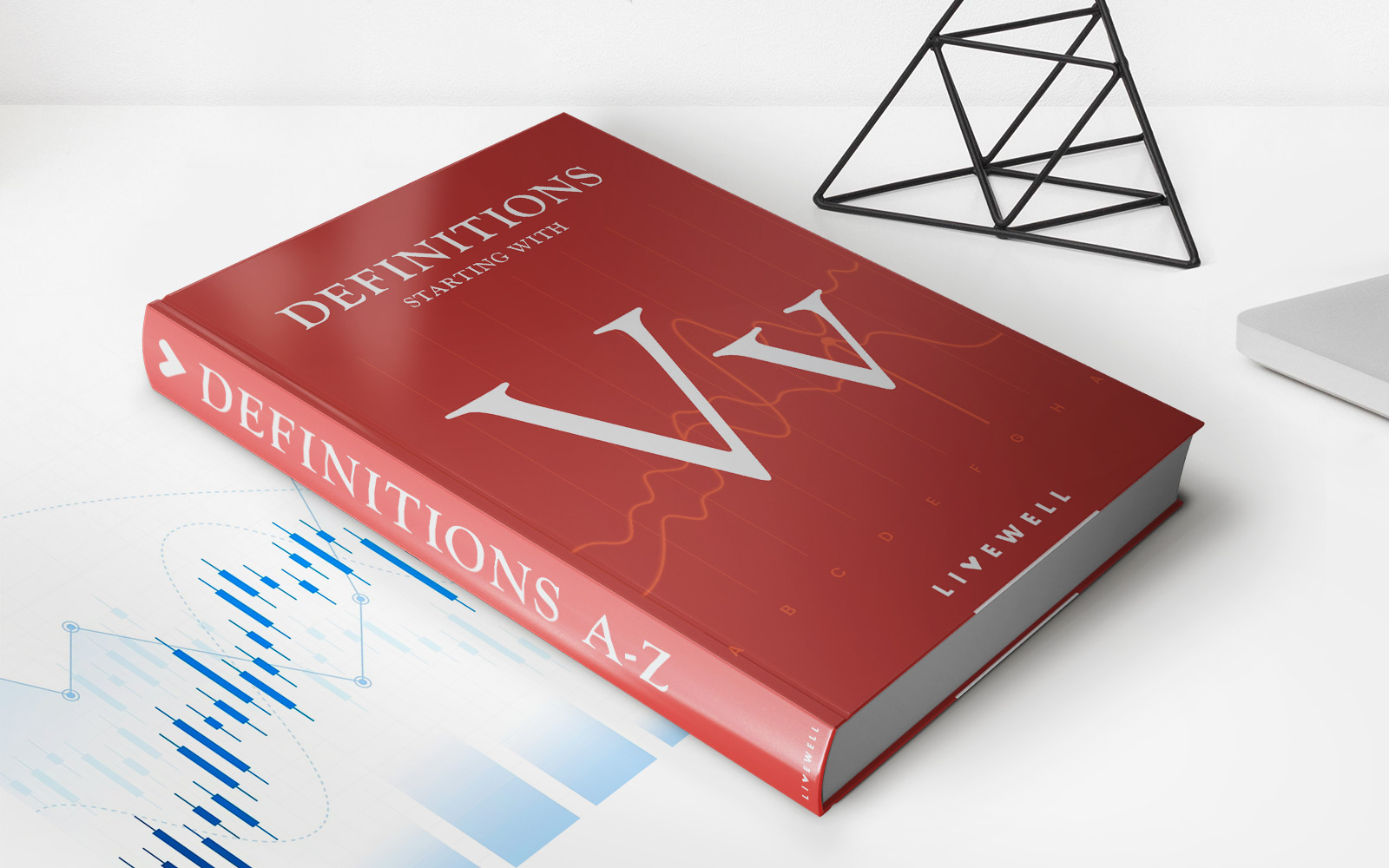

Finance
What Is Blockchain Trade Finance
Modified: March 1, 2024
Learn about the transformative potential of blockchain in trade finance, and how it is revolutionizing the way financial transactions are conducted. Enhance your understanding of finance in the digital era.
(Many of the links in this article redirect to a specific reviewed product. Your purchase of these products through affiliate links helps to generate commission for LiveWell, at no extra cost. Learn more)
Table of Contents
Introduction
Welcome to the world of blockchain trade finance, a revolutionary technology that is transforming the way financial transactions are conducted in the global trade industry. In recent years, blockchain has garnered significant attention and is being hailed as a game-changer in the finance sector. Its decentralized and transparent nature is paving the path for more efficient, secure, and cost-effective trade finance processes.
Trade finance plays a crucial role in facilitating international trade, providing financial solutions and services to support the exchange of goods and services between buyers and sellers across borders. Traditionally, trade finance has been a complex and paper-intensive process, prone to risks, delays, and high costs. However, with the advent of blockchain technology, this landscape is rapidly evolving.
So, what exactly is blockchain and how does it work in the context of trade finance? Blockchain is essentially a decentralized digital ledger that records transactions across multiple computers. Each transaction, or block, is time-stamped, encrypted, and linked to the previous block, creating a permanent and unalterable chain of information. This removes the need for intermediaries and provides a trusted and transparent platform for parties to engage in trade finance transactions.
Blockchain offers numerous benefits to the trade finance industry. By leveraging smart contracts, it enables automated and secure processing of trade finance transactions, reducing the need for manual intervention and eliminating the risk of fraud. It also provides real-time visibility and traceability of transactions, allowing parties to track the movement of goods and funds throughout the supply chain.
However, adopting blockchain in trade finance is not without its challenges. Resistance from traditional financial institutions, regulatory concerns, and the need for interoperability between different blockchain platforms are some of the hurdles that need to be overcome. Nonetheless, as the technology matures and more stakeholders embrace its potential, blockchain has the power to revolutionize trade finance globally.
In this article, we will explore the various aspects of blockchain trade finance in detail. We will delve into the underlying technology, understand its applications in trade finance, and examine the benefits it brings to the industry. Furthermore, we will examine real-world use cases of blockchain in trade finance and highlight how it is reshaping the future of international trade.
Overview of Trade Finance
Before diving into the specifics of blockchain trade finance, it is important to gain a solid understanding of the fundamentals of trade finance itself. Trade finance refers to the financial instruments and products used to facilitate international trade transactions. It provides the necessary capital and risk mitigation solutions to support the buying and selling of goods and services across national borders.
The primary goal of trade finance is to reduce the risks associated with cross-border transactions and provide assurance to both buyers and sellers. It enables exporters to receive payment for their goods, mitigating the risk of non-payment or delayed payment. At the same time, it offers importers access to financing options that allow them to receive the goods before making the payment.
Trade finance encompasses a range of financial services, including but not limited to:
- Letters of Credit (LC): A widely used instrument that guarantees payment to the exporter by the importer’s bank upon the fulfillment of pre-agreed conditions.
- Bank Guarantees: A promise by a bank to cover a buyer’s or seller’s obligations in the event of default.
- Trade Loans: Short-term financing provided to importers or exporters to bridge the gap between the purchase or sale of goods and the receipt of payment.
- Invoice Financing: A form of short-term borrowing that allows businesses to receive immediate cash based on their outstanding invoices.
- Export Credit Insurance: Coverage that protects exporters against the risk of non-payment by the buyer or other political and commercial risks.
Trade finance has traditionally been a paper-intensive process, with multiple intermediaries involved in the verification and processing of transactions. This has resulted in high costs, lengthy processing times, and increased risk of errors or fraudulent activities. These inefficiencies have long been a pain point in the trade finance industry, leading to the exploration of new technologies to streamline and enhance the process.
Blockchain technology offers a potential solution to these challenges by providing a secure, decentralized, and transparent platform for trade finance transactions. Through the use of smart contracts and distributed ledger technology, blockchain eliminates the need for intermediaries and enables faster, more efficient, and cost-effective trade finance processes.
In the next section, we will delve deeper into the intricacies of blockchain technology and understand how it can revolutionize trade finance.
Understanding Blockchain Technology
Blockchain technology is the backbone of decentralized digital currencies such as Bitcoin, but its applications go far beyond cryptocurrency. At its core, blockchain is a distributed ledger technology that allows for the secure and transparent recording of transactions. Unlike traditional centralized databases, blockchain operates on a network of computers, known as nodes, that collectively maintain a shared record of all transactions.
The key characteristics of blockchain include:
- Decentralization: Blockchain operates on a peer-to-peer network, eliminating the need for a central authority or intermediary. This decentralized approach ensures that no single entity has control over the entire network, making it more secure and resilient to attacks.
- Transparency: Once a transaction is recorded on the blockchain, it becomes visible to all participants in the network. This transparency fosters trust among the participants, as they can independently verify and validate the authenticity of the transactions.
- Immutability: Once a transaction is added to the blockchain, it cannot be altered or tampered with. Each block is linked to the previous block using cryptographic hashes, creating an unbroken chain of information. This feature ensures the integrity and security of the data stored on the blockchain.
In the context of trade finance, blockchain technology offers significant advantages. It provides a secure and auditable platform for recording trade finance transactions, eliminating the risk of fraud and ensuring transparency throughout the process. Smart contracts, which are self-executing contracts with the terms and conditions directly written into the code, can be deployed on the blockchain to automate and enforce trade finance agreements.
Moreover, blockchain enables real-time tracking and visibility of transactions, allowing parties involved in trade finance to monitor the movement of goods, the status of documents, and the flow of funds. This increased transparency reduces the risk of disputes, delays, and discrepancies, leading to more efficient and reliable trade finance operations.
It is important to note that there are different types of blockchain networks. Public blockchains, such as Bitcoin and Ethereum, are open to anyone and allow for anonymous participation. In contrast, private or permissioned blockchains are restricted to a specific group of participants, making them more suitable for trade finance applications where privacy and confidentiality are crucial.
Now that we have a basic understanding of blockchain technology, let us explore how it is being applied in the realm of trade finance.
Blockchain Solutions in Trade Finance
Blockchain technology is revolutionizing the trade finance industry by offering innovative solutions to streamline and enhance traditional processes. Here are some key ways in which blockchain is being leveraged in trade finance:
- Smart Contracts: Smart contracts are self-executing digital contracts that automatically execute predefined terms and conditions without the need for intermediaries. They are coded on the blockchain and can facilitate secure and automated trade finance transactions, such as issuance and settlement of letters of credit. Smart contracts eliminate the need for manual processing and reduce the risk of errors and fraud.
- Supply Chain Finance: Blockchain enables enhanced supply chain finance by providing real-time visibility and traceability of goods and documents. By integrating the blockchain with IoT devices and sensors, stakeholders can track the movement of goods, monitor their condition, and trigger financing options automatically based on predefined conditions. This improves the efficiency of supply chain operations and reduces the risk for financiers.
- Trade Documentation: Trade finance involves a vast number of documents, including invoices, bills of lading, certificates of origin, and more. Managing and verifying these documents can be time-consuming and prone to errors. Blockchain technology offers a decentralized and tamper-proof platform for storing and sharing trade documents securely. This eliminates the need for multiple copies of documents, reduces the risk of fraud, and ensures transparency among the participants.
- Digitization of Assets: Blockchain enables the tokenization of physical assets, such as commodities or inventory, into digital tokens on the blockchain. These digital tokens represent ownership or rights to the underlying assets and can be traded on the blockchain. This opens up new opportunities for trade finance by allowing for fractional ownership, real-time asset tracking, and more efficient collateral management.
Blockchain solutions in trade finance offer significant benefits to all parties involved. They streamline and automate processes, reduce paperwork and manual errors, enhance transparency and visibility, and lower costs. By eliminating the need for intermediaries and enabling direct peer-to-peer transactions, blockchain drives efficiency and removes friction from trade finance operations.
However, implementing blockchain solutions in trade finance comes with its own set of challenges. Integration with existing legacy systems, regulatory compliance, standardization, and interoperability are some of the hurdles that need to be addressed. Additionally, collaboration among stakeholders and industry-wide adoption is necessary for maximizing the potential of blockchain in trade finance.
In the next section, we will explore the benefits and challenges of blockchain technology in trade finance.
Benefits and Challenges of Blockchain in Trade Finance
Blockchain technology has the potential to revolutionize trade finance processes, offering numerous benefits to the industry. However, there are also challenges that need to be addressed for widespread adoption. Let’s explore the benefits and challenges of blockchain in trade finance:
Benefits of Blockchain in Trade Finance:
- Enhanced Security: Blockchain’s decentralized nature and cryptographic algorithms make it highly secure. It ensures that transactions and data recorded on the blockchain are tamper-proof and transparent. This significantly reduces the risk of fraud and enhances the security of trade finance transactions.
- Improved Efficiency: By automating processes and reducing the need for intermediaries, blockchain streamlines trade finance operations and reduces paperwork. Smart contracts on the blockchain facilitate faster and more accurate execution of agreements, leading to increased efficiency and reduced processing times.
- Transparency and Traceability: Blockchain provides real-time visibility and traceability of transactions, allowing all stakeholders to track and verify the movement of goods, documents, and funds at every stage of the trade finance process. This transparency reduces disputes and enhances trust among participants.
- Cost Reduction: By eliminating manual processes, paperwork, and intermediaries, blockchain reduces operational costs in trade finance. The automation of tasks and the removal of redundant processes result in cost savings for all parties involved, making trade finance more accessible and affordable.
- Financial Inclusion: Blockchain has the potential to connect unbanked or underbanked individuals and businesses to the global trade finance ecosystem. By digitizing assets and creating transparent and accessible platforms, blockchain opens up opportunities for financial inclusion and empowers small and medium-sized enterprises (SMEs) to participate in international trade.
Challenges of Blockchain in Trade Finance:
- Regulatory Concerns: The regulatory landscape surrounding blockchain technology is still evolving, with different jurisdictions having different approaches. There is a need to establish clear guidelines and standards for the use of blockchain in trade finance to ensure compliance with existing regulations and address any potential legal issues.
- Interoperability: There are multiple blockchain platforms being developed, each with its own protocols and standards. Interoperability among these platforms is essential for seamless integration and collaboration in trade finance. Efforts are underway to establish interoperability frameworks, but more work needs to be done in this area.
- Legacy System Integration: Many financial institutions and trade finance participants still rely on legacy systems that are not compatible with blockchain technology. Integrating blockchain solutions with existing systems poses technical challenges and requires careful planning and collaboration between different stakeholders.
- Education and Adoption: Blockchain is a relatively new technology, and there is a need for education and awareness among trade finance professionals and stakeholders. Understanding the capabilities and potential of blockchain is crucial for its widespread adoption and utilization in trade finance.
Despite these challenges, the benefits of using blockchain in trade finance outweigh the drawbacks. As the technology continues to mature and industry-wide collaboration increases, blockchain has the potential to transform trade finance into a more efficient, secure, and accessible ecosystem.
In the next section, we will explore real-world use cases of blockchain in trade finance to gain a better understanding of its practical applications.
Use Cases of Blockchain in Trade Finance
Blockchain technology is being implemented in various use cases within the trade finance industry, revolutionizing the way transactions are conducted and accelerating the efficiency of trade finance processes. Let’s explore some real-world examples of how blockchain is transforming trade finance:
- Trade Settlement and Payments: Blockchain enables faster and more secure settlement and payments in trade finance. By recording transactions on the blockchain and utilizing smart contracts, the need for manual reconciliation is eliminated, reducing processing times and minimizing the risk of errors or disputes.
- Letter of Credit (LC) Processing: Letters of Credit play a crucial role in international trade finance. Traditionally, the process involves substantial paperwork, manual verification, and multiple intermediaries. Blockchain simplifies and automates the LC process by digitizing the documentation and enabling real-time tracking and validation of the credit terms, reducing the processing time and increasing security.
- Supply Chain Financing: Blockchain empowers supply chain financing by providing transparency and traceability throughout the supply chain. By integrating the blockchain with IoT sensors and devices, stakeholders can track the movement of goods, monitor their condition, and trigger financing options automatically. This reduces the risk for financiers and allows for more efficient and accurate financing decisions.
- Invoice Factoring: Invoice factoring involves the use of invoices as collateral for financing. Blockchain enables the digitization and secure storage of invoices on the blockchain, eliminating the risk of duplication or fraud. This allows for real-time visibility of invoices, faster verification, and efficient invoice factoring processes.
- Trade Data Verification: Blockchain can be utilized to verify the authenticity and accuracy of trade-related data, such as certificates of origin, bills of lading, and inspection reports. By recording the data on the blockchain, it becomes tamper-proof and transparent, reducing the risk of document forgery and ensuring the integrity of trade transactions.
These are just a few examples of how blockchain is being applied in trade finance. The immutable nature of blockchain, combined with its transparency and automation capabilities, offers immense potential for enhancing trust, efficiency, and security throughout the trade finance ecosystem.
It is worth noting that while there have been successful pilot projects and use cases, widespread adoption of blockchain in trade finance is still in progress. As more industry participants embrace blockchain technology and collaborate to address regulatory and interoperability challenges, the impact of blockchain on trade finance is expected to grow significantly.
In the final section, we will conclude our exploration of blockchain in trade finance and highlight the transformative potential of this technology in shaping the future of international trade.
Conclusion
Blockchain technology is ushering in a new era of efficiency, transparency, and security in the trade finance industry. With its decentralized and immutable nature, blockchain has the potential to revolutionize traditional trade finance processes, reducing costs, eliminating manual errors, and enhancing trust among participants.
Through the use of smart contracts, blockchain enables the automation and execution of trade finance agreements, streamlining the issuance and settlement of letters of credit, and facilitating faster and more secure payments and settlements. The transparency and traceability provided by blockchain improve visibility and reduce disputes, leading to more efficient and reliable trade finance operations.
While blockchain offers significant benefits in trade finance, there are challenges that need to be addressed. Regulatory concerns, interoperability issues, legacy system integration, and the need for education and adoption pose hurdles to widespread implementation. However, ongoing efforts by industry participants and regulators to establish standards, promote collaboration, and educate stakeholders are paving the way for blockchain’s adoption in trade finance.
Real-world use cases of blockchain in trade finance, such as trade settlement and payments, letter of credit processing, supply chain financing, invoice factoring, and data verification, demonstrate the transformative potential of this technology. These use cases showcase how blockchain streamlines processes, enhances security, and increases efficiency, ultimately benefiting all parties involved in international trade.
The future of trade finance lies in the integration of blockchain technology into existing infrastructures and the collaboration between stakeholders in the trade finance ecosystem. As the technology continues to mature, we can expect to see increased adoption and innovative solutions that leverage blockchain’s capabilities to further streamline and optimize trade finance processes.
Blockchain trade finance is not just a concept for the distant future; it is a reality that is already transforming the way we conduct international trade. By embracing blockchain’s disruptive potential and overcoming the associated challenges, the global trade finance industry can unlock new opportunities, empower small businesses, and build a more inclusive and efficient trade ecosystem.














